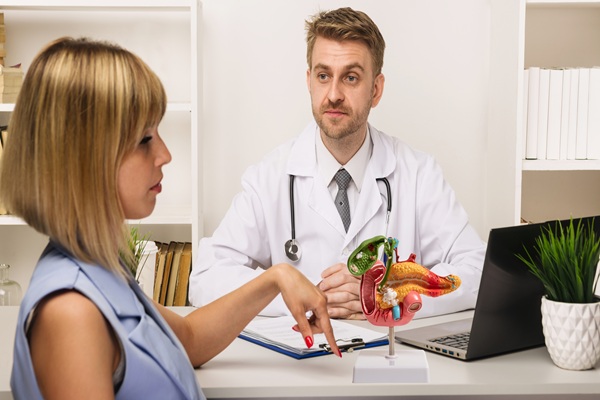Some Causes and Symptoms of Blog Clot Disorders

A percentage of the human population has blood clot disorders. These are irregularities in your body’s ability to control your blood clotting. Coagulation disorders can cause thrombosis or excessive clotting. It can also cause a hemorrhage or very little clotting. If you want to find out some causes and symptoms of blood clot disorders, here are the details.
Causes resulting in excessive bleeding
Individuals with clotting disorders can suffer from a lack of clotting components. Proper clotting is important to prevent excessive blood loss. The patient tends to experience excessive bleeding from the smallest cut or puncture. Improper platelet function can result from vitamin K deficiency or platelet malfunction.
Hemophilia is a condition resulting from a low level of clotting factor protein. Liver disease can also cause insufficient clotting. The liver synthesizes clotting factors. A sick liver cannot do this well. That is why the person ends up bleeding in excess from a small wound.
Von Willebrand disease is one of the hereditary blood clot disorders. The von Willebrand factor is one of the clotting factors in the blood. A person with low levels of this clotting factor results in excessive bleeding. An over-synthesis of circulating anticoagulants can also cause excessive bleeding. This condition stops the clotting completely. Its symptoms are like hemophilia.
Causes resulting in excessive clotting
People with too much clotting may have low levels of protein S or protein C. A deficiency in ATIII (antithrombin III) leads to unregulated clotting and bleeding. Factor V Leiden involves the overreaction of the V Leiden clotting factor. This is a genetic ailment. It also leads to too much blood clotting.
The antiphospholipid antibody syndrome is an autoimmune disease. It results from an increase in blood proteins capable of increasing the risk for blood coagulation. PT (prothrombin) gene mutation is another one of the genetic blood clot disorders. This results from a mutation triggering excessive clotting.
Symptoms of weak clotting
People suffering from blood clot disorders exhibit some telling symptoms. Excessive fatigue and headaches show little blood flowing through the person’s veins. The blood seeps out into the muscles. This results in the presence of blood in the stool and urine. Sudden nosebleeds and injuries bleeding too much are also telling symptoms.
Blood clot disorders cause extended bleeding from surgeries and small cuts. They can also experience joint pain from internal bleeding. Double vision and other vision problems may also occur. Repeated vomiting is a sign of low blood pressure.
Symptoms of excessive clotting
A blood clot formation from too much clotting can result in DVT (deep vein thrombosis). Patients with this disorder have pain, warm, red skin with swelling in the leg or arm. PE (pulmonary embolism) is a condition in which the clot has reached the lung. Fast heartbeat, chest pain, and shortness of breath are symptoms of this condition. A young person could have a stroke or heart attack. Women with blood clot disorders can also experience recurrent stillbirth or pregnancy loss.
Blood clot disorders can result from genetic or acquired causes
Clotting is your body’s natural ability to stop bleeding. It retains the blood inside your body and helps in the healing process. This ensures the proper function of the body’s systems. Blood clot disorders can be hereditary or acquired from a situation or lifestyle. Seeing a doctor for medical attention and treatment can help improve these ailments.
Get more information about Lindenberg Cancer & Hematology Center in Marlton at https://lindenbergcancer.com.
Check out what others are saying about our services on Yelp: Blood Clot Disorders in Marlton, NJ.
Recent Posts
Gynecological cancer treatment is a complex and often emotionally challenging journey. Patients and their families frequently have questions and concerns about available options, potential side effects, and long-term outcomes. The following guide provides answers to some of the most common questions about gynecological cancer and what you can expect from the treatment process.According to Johns…
Navigating the effects of gastrointestinal cancer treatment involves more than managing the disease itself. Patients often encounter a wide range of physical and emotional symptoms that affect daily comfort, appetite, strength, and rest. A proactive approach to symptom management can ease this burden, enhance treatment outcomes, and support a higher quality of life throughout the…
A visit to a cancer doctor often feels overwhelming, but understanding what a cancer doctor does and how the first appointment unfolds reduces anxiety and supports confident decisions. A clear idea of what to expect allows patients and families to prepare questions, gather records, and take an active role in care from the very first…
Blood health is an important part of maintaining your overall well-being. A hematologist is a medical specialist trained to diagnose and treat blood disorders. These medical professionals can provide critical support for those managing conditions that affect red blood cells, white blood cells, platelets, bone marrow, or the lymphatic system. Having access to this specialized…


